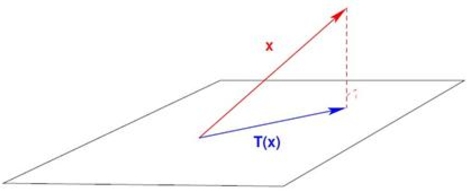Description
Geometrically, the intuition behind Gram-Schmidt is that the difference vector, also called the error vector in least squares, between a vector and its projection onto a subspace are orthogonal to each other.

In this image, the dotted red line represents the error vector between and its projection on the subspace. Note that the projection of and the error vector are orthogonal to each other.
Using this property, we can then construct an orthogonal basis given a set of vectors.
Last updated
Was this helpful?